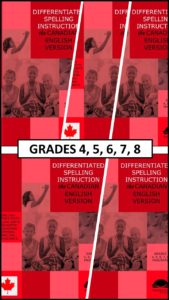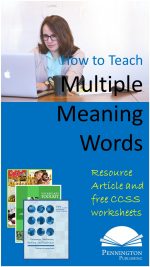
Diagnostic Spelling Tests
Teachers who are committed to differentiated and individualized spelling to help students catch up, while they keep up with grade-level instruction believe that spelling assessment should inform their instruction. The relevant question for this presentation is which spelling inventory or assessment provides the most teachable data for grades 4–post secondary students who struggle with spelling.
We’ll take a look at the two most popular spelling diagnostic tests, the Words Their Way® Elementary Spelling Inventory (ESI) and the Upper-Level Spelling Inventory (USI) and compare these to the Grades 4, 5, 6, 7, 8 Differentiated Spelling Instruction Diagnostic Spelling Assessment (DSA).
What’s the Same?
The ESI is designed for kindergarten–sixth grade; the USI is designed for upper elementary, middle school, high school, and post secondary students. The DSA is designed for grades 4–post secondary students. Note that Words Their Way® also provides another spelling inventory which will be excluded from our comparisons: the Primary Spelling Inventory, which is designed for kindergarten–third grade
The ESI, USI, and DSA tests are administered in the traditional word–example sentence–word format, and the focus spelling appears at the beginning, middle, and end of words. Only the focus spelling is corrected. For example, if the focus spelling is short /o/, the misspelling of the double consonant “gg” would not be marked incorrect for the test item foggy. Thus, “fogy” would be marked correct, but “fuggy” would be marked incorrect. All 3 spelling tests include features analysis on recording matrices. Each of the 3 tests diagnostically points to areas which need spelling remediation and practice for individual students.
What’s Different?
However, the purpose of the ESI and USI inventories differs from that of the DSA. The ESI and USI have been designed to identify which of the 5 Words Their Way® developmental spelling stages matches the spelling competencies of the assessed students. In contrast, the DSA has been designed to identify which specific spelling patterns and conventional spelling rules have and have not yet been mastered by the assessed students.
The test administration differs in that the ESI and USI administrator may stop an individual’s test when the student has missed 8 items in succession because the test is in order of difficulty. Students taking the DSA take the entire allotted amount of test items assigned to each grade level. Note that the DSA includes a recommended audio file for test administration.
Finally, the composition of the ESI and USI differs from that of the DSA. The ESI and USI test sample words for each of the program’s 5 developmental spelling stages. The ESI includes 10 single syllable words and 10 multisyllabic words; the USI includes 6 single syllable words and 19 multisyllabic words. The ESI has 25 test items with 62 measurable features, and the USI has 31 test items with 68 features. Both assessments use some words to assess more than one orthographic feature. For example, the test item, float, assesses knowledge of the “fl” consonant blend, the “oa” long /o/, and the “t” consonant.
In contrast, the DSA assesses all common spelling patterns introduced in previous grade-level spelling programs and reading. Fourth grade students complete the first 64 test items to assess kindergarten–third grade spelling patterns; Fifth grade students complete 79 test items to assess assess kindergarten–fourth grade spelling patterns and conventional spelling rules; Sixth grade students complete 89 test items to assess assess kindergarten–fifth grade spelling patterns and conventional spelling rules; Seventh grade students complete 98 test items to assess assess kindergarten–sixth grade spelling patterns and conventional spelling rules; and eighth grade, high school, and adult students complete 102 test items to assess assess kindergarten–seventh grade spelling patterns and conventional spelling rules. Unlike the ESI and USI inventories, all test words are multisyllabic to attempt to isolate the sight word variable, and only one spelling feature is assessed per test item.
Which Test Provides the Most Teachable Data?
Now, let’s get down to comparing the specific test items for each of these three spelling tests to determine which test provides the most teachable data to help teachers remediate the spelling  deficits of their students. To see all kindergarten–third grade spelling pattern test item comparisons, check out the video: https://www.youtube.com/watch?v=aczs81Jhcz8
deficits of their students. To see all kindergarten–third grade spelling pattern test item comparisons, check out the video: https://www.youtube.com/watch?v=aczs81Jhcz8
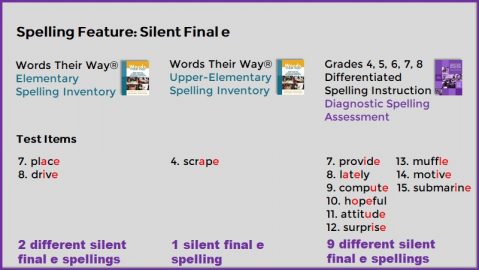
Which Test Data Would You Prefer?
Most teachers prefer comprehensive spelling assessment data, rather than sample spelling features. Rather than learning that a child is spelling in the “Within Word” developmental stage, most teachers would prefer knowing which specific “Within Word” spelling patterns have and have not yet been mastered.
In our example chart, both Words Their Way® inventories provide minimal test items for the Silent Final e. To be fair, remember that the purpose of these inventories is to determine students’ developmental spelling stages. These test items in conjunction with other vowels, consonants, blends, and digraphs do accomplish their purpose. However, learning students’ spelling stages does not indicate what students know and what students do not know within those spelling stages.
For example, the Silent Final e test items on the Words Their Way® inventories only show whether students know the “a_e” and “i_e” spellings. Teachers have no data on the “u_e” long /u/ and long /oo/, “o_e”, “le”, “i_e” as in motive and as in submarine. Students may have mastered some of these spellings, but teachers do not know, so students are forced to study all Silent Final e spelling patterns, as well as all vowel, consonant, blends, and digraphs. Hardly efficient assessment and instruction.
In contrast, because the Diagnostic Spelling Assessment tests all common spelling patterns, teachers will learn which of the 9 Final Silent e spellings their students know and do not know (plus all the other common spelling patterns in the “Within Word” stage as demonstrated in the video link above). As a result, teachers can target spelling instruction to what students need and avoid teaching what students already know. Effective spelling instruction need not take up too many instructional minutes. In fact, many teachers have abandoned the Words Their Way® programs because of time constraints.
Additionally, although the Words Their Way® authors claim that their instructional approach is word study, including spelling, syllabication, phonics, writing, and vocabulary, other instructional approaches simply work better and are more efficient.

Differentiated Spelling Instruction
Compare the Words Their Way Spelling Inventories and their plethora of word study resources to the Diagnostic Spelling Assessment and the resources in the Grades 4, 5, 6, 7, and 8 Differentiated Spelling Instruction. Each of the latter’s full-year spelling programs include weekly grade-level spelling pattern tests and spelling sorts, summative spelling assessments, and remedial spelling worksheets corresponding to each test item on the Diagnostic Spelling Assessment with sorts, rhymes, book searches, jumbles, and a writing application which serves as a formative assessment. Also get supplementary word lists, spelling songs, and spelling review games. These no prep, minimal correction programs take much less class time than Words Their Way® and other programs. Plus, at $29.99 and the 10% discount (enter code 3716 at checkout), every teacher can afford the spelling program designed to help students catch up while they keep up with grade-level spelling standards.
The Differentiated Spelling Instruction programs are easy to teach. We even provide two quick YouTube training videos to ensure your success!
Get the Diagnostic Spelling Assessment, Matrix, and Sample Lessons FREE Resource:

Grammar/Mechanics
developmental spelling stages, diagnostic spelling assessment, differentiated spelling instruction, Elementary Spelling Inventory, English spelling, grade 4 spelling, grade 5 spelling, grade 6 spelling, grade 7 spelling, grade 8 spelling, Mark Pennington, spelling patterns, spelling programs, spelling rules, Spelling Standards, spelling tests, spelling word lists, spelling workbook, spelling worksheets, Upper Elementary Spelling Inventory, Words Their Way
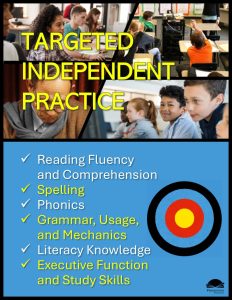
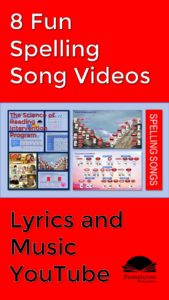 Introducing the
Introducing the 